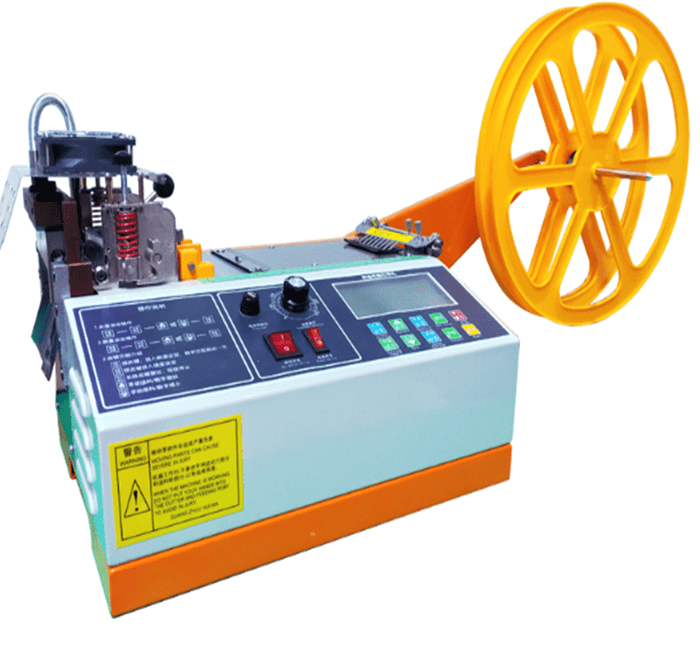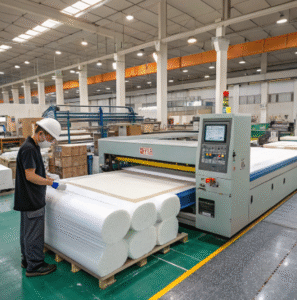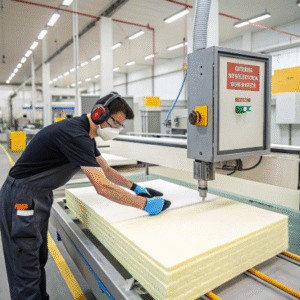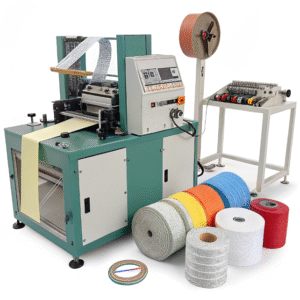What is a rotary die cutting machine?

Cutting flat edges is easy—but when your product needs angled cuts, curves, or custom shapes, traditional methods quickly hit their limits.
A rotary die cutting machine uses a rotating cylindrical die to cut precise, repeatable shapes like trapezoids, beveled corners, right angles, and curved edges—all at high speed.
This rotating mechanism is what sets rotary die cutters apart. In my own experience, it’s been a game-changer for flexible material processing where accuracy and shape flexibility matter most.
What is the rotary die process used for?

If you’re still using flatbed die cutters or hand-trimming complex forms, you’re wasting time—and likely compromising quality.
The rotary die process is used to cut, shape, kiss-cut, or perforate flexible materials into custom forms at high speeds, enabling consistent outputs for shapes that include angles, curves, and complex geometries.
This technology is widely used in industries like:
- Packaging
- Medical device manufacturing
- Automotive components
- Electronics (insulating films)
- Labeling and printing
- Industrial tape and adhesive applications
Why "Rotary" Changes Everything
Unlike flatbed machines that cut with up-down motion, rotary die cutting uses a cylindrical die that spins in perfect sync with the material feed. This rotation makes continuous, in-line cutting possible—ideal for high-volume production.
The spinning die can include multiple blades or engraved forms set at various angles and depths. Because of this, we can achieve shapes that are nearly impossible with flat dies.
Real Use Case: Cutting Trapezoid and Angled Shapes
One of our customers needed slanted foam inserts shaped like trapezoids to fit into uniquely angled protective cases. The tolerances were tight—just ±0.2 mm. Flatbed cutting couldn’t do the job fast or accurately enough.
We helped them switch to a rotary die solution with a custom-engraved rotating blade cylinder. The result: smooth, accurate cuts—even at high speeds—with no extra trimming or manual work.
Types of Cuts Made Possible
| Shape/Cut Type | Description | Common Use |
|---|---|---|
| Trapezoid | Non-parallel sides for angled fitting | Foam inserts, filters, custom gaskets |
| Beveled Angle | Angled cuts like 30°, 45°, 60° | Medical patches, corner protection |
| Right Angle | Clean 90° square edges | Labels, adhesive tabs, product liners |
| Rounded Corners | Smooth edge finishes | Sealing rings, wearable tech parts |
| Multi-Zone Cuts | Several shapes in one rotation pass | Complex electronics or sticker sheets |
Whether you need a full cut-through, kiss-cut, or perforation, the rotary die cutter handles them all with unmatched consistency.
What makes rotary die cutting more efficient than flat die cutting?
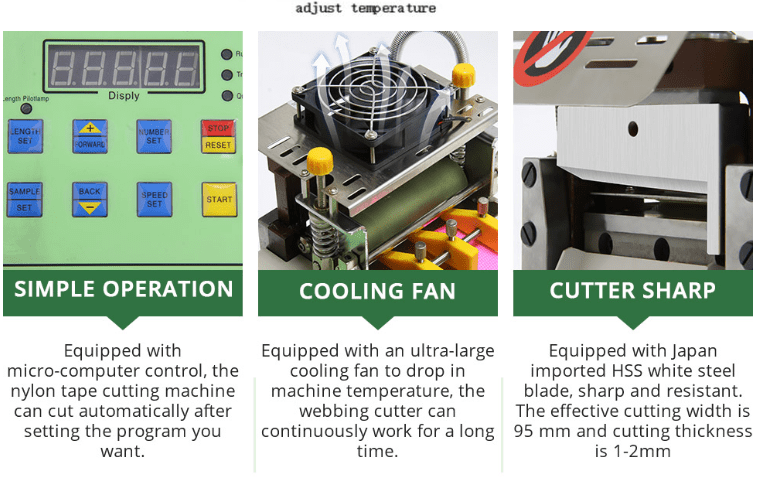
Many factories start with flatbed die cutting. It works well for low-volume production. But as demand grows, speed and precision become bottlenecks.
Rotary die cutting is more efficient because it allows continuous in-line cutting, faster cycle times, and the ability to shape complex profiles without stopping the feed.
Speed Comparison
| Machine Type | Speed Range | Ideal Volume |
|---|---|---|
| Flatbed Cutter | 20–60 strokes/min | Low-volume, batch jobs |
| Rotary Cutter | 100–400 feet/min | Medium to high-volume |
Rotary cutters eliminate the need for start/stop action. Once the web material is aligned and tensioned, it moves through the rotating die system without pause.
In our production line, after switching from flatbed to rotary, we reduced lead times by 40% and material waste by 15%.
Reduced Human Error
Because the die rotates in harmony with the material feed, there’s no room for timing issues or misalignment. Every cut lands exactly where it’s supposed to—even across multi-layer films or pressure-sensitive adhesives.
This level of precision means fewer defective units and a more professional final product.
Long-Term Cost Efficiency
While the upfront cost of a rotary die system can be higher, the ROI becomes clear quickly:
- Less labor: One operator can manage multiple processes
- Faster output: Meet larger orders without overtime
- Better material usage: Less scrap, tighter tolerances
What materials can rotary die cutting machines process?

People often ask me: “Can this machine handle my material?” More often than not, the answer is yes—as long as the material is flexible and web-fed.
Rotary die cutting machines can process a wide range of flexible materials, including foams, films, adhesives, laminated sheets, rubber, and multi-layer composites.
Common Material Types
| Material Type | Description | Application Example |
|---|---|---|
| PET / PVC Films | Thin plastic layers | Insulation, face shields |
| Adhesive Tapes | Double-sided or masking | Gaskets, bonding strips |
| Rubber Sheets | EPDM, silicone | Vibration pads, custom seals |
| EVA / PE Foam | Lightweight cushioning | Case inserts, medical packaging |
| Laminated Paper | With or without liners | Stickers, shelf labels |
| Multi-layer composites | Combined materials (e.g. foam + film) | Wearable tech, filter membranes |
The key to success is understanding the tension, thickness, and layering of each material. We’ve worked with clients who stack up to 5 layers in one pass—cutting, kiss-cutting, and laminating all at once.
Shape Doesn’t Limit Performance
Thanks to the rotating die structure, you can achieve shapes that are:
- Highly geometric (e.g., square with inner cutouts)
- Contoured (e.g., rounded edge pads)
- Angled (e.g., 30° or 60° bevels)
- Mixed (e.g., a trapezoid with perforated holes)
Whether it’s a perfect circle or a jagged trapezoid, this machine cuts it cleanly—again and again.
How do I choose the right rotary die cutting machine?

Choosing the right machine isn’t just about specs—it’s about matching performance to your material and application.
To choose the right rotary die cutting machine, consider your material type, shape complexity, production speed, and available space.
Key Factors to Consider
1. Shape Requirements
If you need custom angles or varied geometry, ensure your die supplier can engrave multi-axis blades or flexible die cylinders.
2. Material Web Width
Match the machine’s width to your maximum material roll size. Wider machines (up to 600mm or more) are available for high-throughput operations.
3. Cutting Style Needed
- Full-cut: For through-cuts
- Kiss-cut: Leaves the liner untouched
- Perforation: For tear-away sections
4. Run Length
If you’re running short batches, flatbed may still be fine. For continuous production, rotary is far superior.
Optional Add-ons
- Auto-alignment sensors
- Integrated laminating stations
- Vacuum waste removal
- Rewinder for finished rolls
When we upgraded to a servo-controlled rotary cutter with integrated kiss-cutting and perforation, we were able to run 3 jobs in parallel—without pausing the line.
Conclusion
A rotary die cutting machine gives you the freedom to cut complex shapes like trapezoids, angled edges, and sharp corners at speed and scale—with precision every single time.
insights:
If you’re exploring custom shapes or want to cut production time by half, a rotary die cutting machine could be your best investment this year. Reach out if you want help designing the right tool for your application—I’ve worked with dozens of materials and die types, and I’m happy to share what works.
